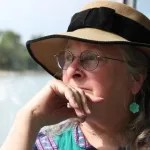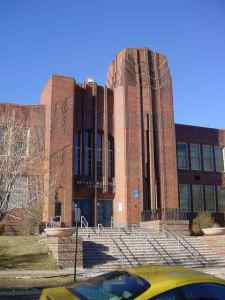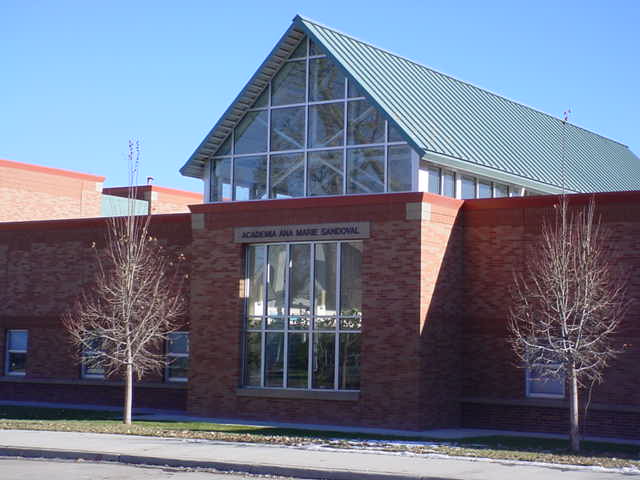In 1947, Denver Mayor Quigg Newton commissioned a study to look at the status of Latino families in Denver. One area of concern was education.
At that time, 85% of North Denver adults had attended school only through the eighth grade. In 1944, of every 100 children who started kindergarten, only half finished eighth grade and only six completed high school.

In North Denver, 27% of students at the Bryant and Webster schools came from Spanish-speaking families. Other Latino elementary students attended the aging Ashland School. Those who went on to high school went to North High.
Economic factors caused students to quit school. They needed to help support their families, stayed home to care for younger siblings so parents could work, or simply did not have enough money to buy school clothes and supplies. Many changed schools frequently as their parents moved, looking for work. Illness also forced some children to quit.
The Denver Public Schools worked through the 1950s and 1960s to improve education for Latino children. One problem they worked on was the small number of Mexican-American teachers. In 1958, of nearly 3,000 teachers in the Denver Public Schools, only 30 had Spanish surnames.

In response to these statistics, the district began to hire more Latino educators. Since few native-born teachers knew much about Mexican-American history, the district hired Lino Lopez to educate them on Mexican-American culture.
When the district replaced Ashland School, the new school reflected the changing demographics of the Highland neighborhood. Ashland became the José Valdez Elementary School named after a local Mexican-American resident who died in World War II.
Beginning in the 1970s, José Valdez Elementary offered a bilingual program to the approximately 80% of students who were recent immigrants. The bilingual program helped children whose first language was Spanish acquire English proficiency. Bilingual education proved controversial, with supporters pointing to higher reading scores and detractors arguing that it slowed Americanization. Many in the Anglo-American community believed that one of the main responsibilities of public schools was to quickly make good Americans of new immigrants.
By the 1990s, about half of all immigrant laborers who came to Denver brought their families. One reason was the high value they placed on education. Their children would learn more in Denver than they would in Mexico, since many Mexican districts only had enough money to allow children to attend school for half a day.
In spite of advances made in the last few decades, the Denver Public Schools still struggles with how to educate its immigrant students, including in North Denver. Each year brings new progress as well as new challenges. Aging buildings need expensive repairs. Bond issue 3A, in November of 2008 was designed to remedy many problems. Meanwhile, new administrations at the schools worked on creative solutions to improve education for all students.
One solution was a dual-language elementary school on the boundary between North Denver and Potter Highland. Named Academía Ana Marie Sandoval, located at 3655 Wyandot St., it was pushed by a broad coalition of parents, not all of whom were from the Latino community. It operated on the Montessori model for preschool through sixth grade. As a lottery school, it gave first priority to children who already had siblings in the school, and second priority to those who lived in the neighborhood.
The two earlier schools, Bryant and Webster, merged to create the Bryant-Webster Elementary School, located at 3536 Quivas St. By the early 2000s, Bryant-Webster was a majority Latino dual-language school that taught students from early childhood through eighth grade. It boasted a youth mariachi group, The Mariachi Juvenil de Bryant-Webster, that played for festivals, neighborhood and school events. This was the brain-child of Pamela Liñan.
Over time, the schools have gotten more responsive to the needs of Latino children and their families. We only hope that this can continue.
Dr. Rebecca A. Hunt has been a resident of North Denver since 1993. She worked in museums and then taught museum studies and Colorado, Denver, women’s and immigration history at the University of Colorado Denver until she retired in 2020.

